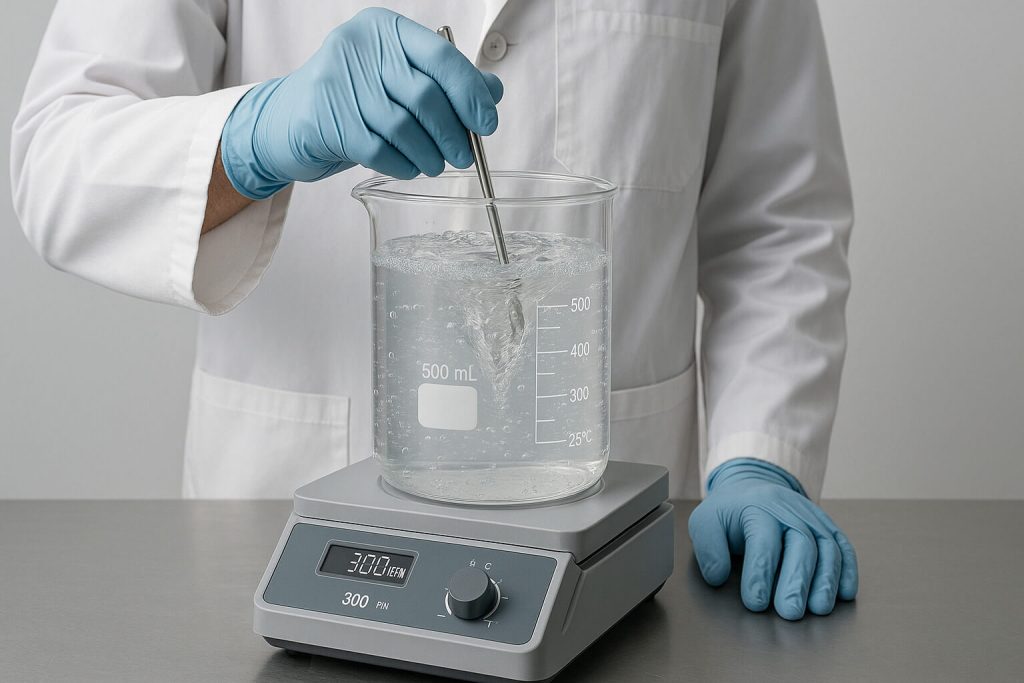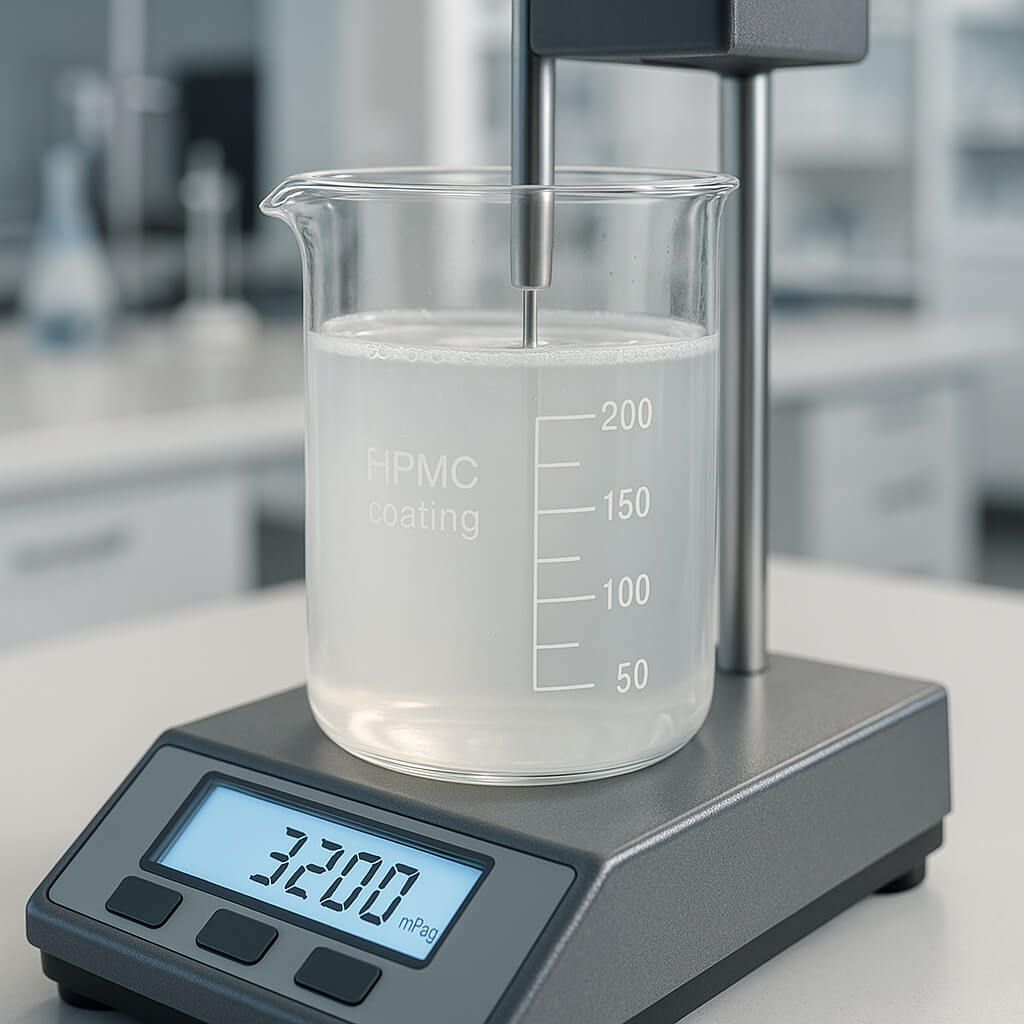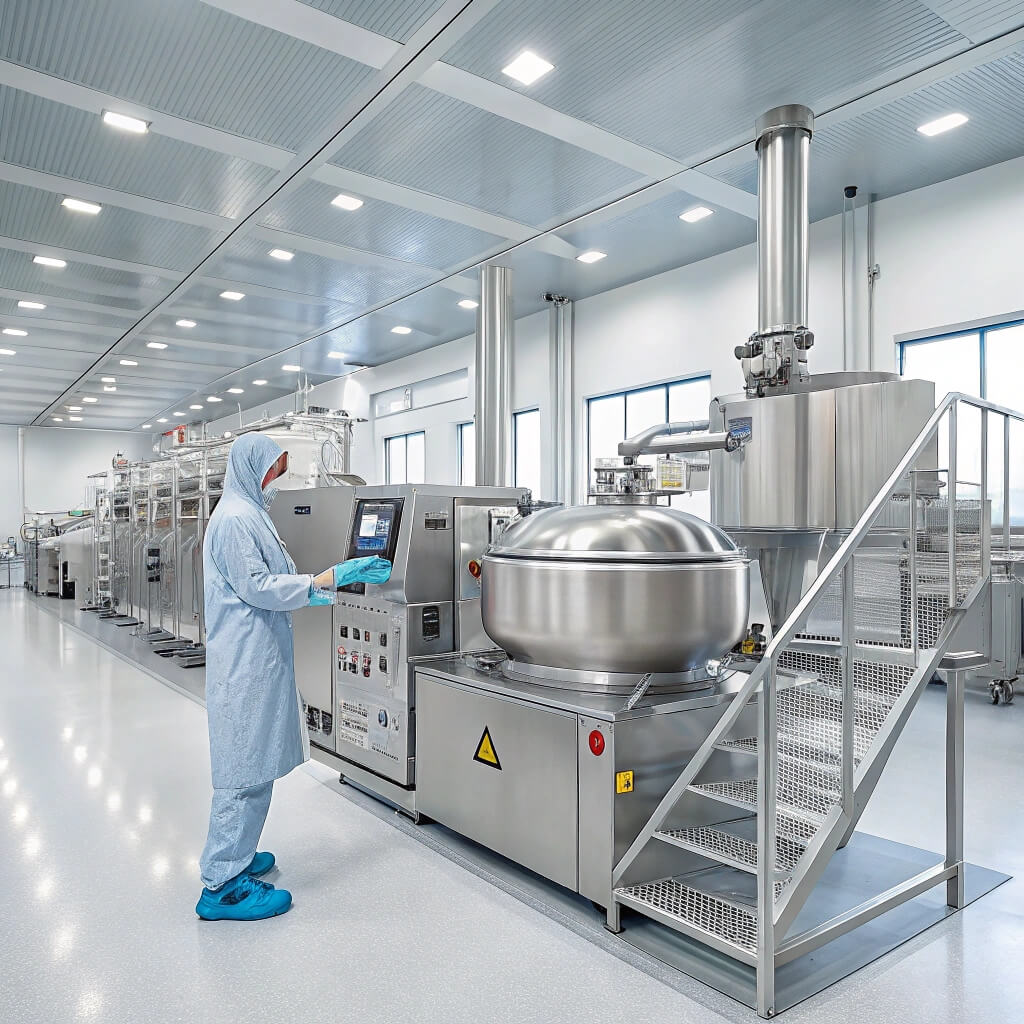Hydroxypropyl methylcellulose (HPMC) stands as one of the most versatile compounds in modern industrial applications, serving dual roles as both a thickener and excipient across multiple sectors. This semi-synthetic polymer derived from cellulose has become indispensable in pharmaceuticals, food products, construction materials, and personal care items due to its unique physicochemical properties. If you’re involved in product formulation or manufacturing processes that require precise rheological control, understanding HPMC’s capabilities is essential for optimizing your products. This guide explores the multifaceted applications of HPMC, examining its performance characteristics, technical considerations, and implementation strategies to help you make informed decisions about incorporating this valuable ingredient into your formulations.

1. What Is HPMC And Why Is It Important In Various Industries?
Hydroxypropyl methylcellulose (HPMC) is a semi-synthetic, non-ionic cellulose ether derived from natural cellulose through chemical modification. The manufacturing process involves treating cellulose with sodium hydroxide, followed by reaction with methyl chloride and propylene oxide to introduce methoxy and hydroxypropyl substituents onto the cellulose backbone.
But here’s what makes it truly special: HPMC possesses a remarkable ability to function effectively in diverse environments and applications due to its balanced hydrophilic-hydrophobic character. This dual nature allows it to interact with both water and organic compounds, making it an exceptionally versatile ingredient in formulations.
The historical development of HPMC dates back to the mid-20th century, with the global HPMC market now valued at over $1.2 billion and projected to continue expanding at a compound annual growth rate of approximately 7-8% through 2028.
HPMC’s importance stems from its multifunctional capabilities as a thickening agent, binding agent, film-forming agent, stabilizer, and water retention agent.
| Свойство | Characteristic | Benefit in Applications |
|---|---|---|
| Растворимость | Cold-water soluble | Easy incorporation without heating |
| Вязкость | Adjustable based on grade | Precise rheology control |
| Surface Activity | Moderate surface tension reduction | Stabilization of dispersions |
| Термическое гелеобразование | Forms gel at elevated temperatures | Поведение, реагирующее на температуру |
| Стабильность pH | Stable across pH 3-11 | Versatility across formulations |
The major industries benefiting from HPMC include pharmaceuticals, food, construction, personal care, and paints and coatings, where its versatility extends to functioning across a wide temperature range, maintaining stability during processing, and providing consistent performance throughout product shelf life.
2. How Does HPMC Function As An Effective Thickener In Food Products?
HPMC has established itself as a premier thickening agent in the food industry due to its unique mechanism of action in aqueous systems. When introduced to water, HPMC molecules undergo hydration, creating a three-dimensional network that increases viscosity through hydrogen bonding between the hydroxyl groups and water.
А вот и самая захватывающая часть: Unlike many other food thickeners, HPMC exhibits inverse thermal gelation properties. This means that as temperature increases, HPMC solutions form a gel structure rather than thinning out. This unique characteristic makes it particularly valuable in applications where stability during heating is critical.
| Диапазон температур | Поведение HPMC | Преимущество применения |
|---|---|---|
| Below 20°C | Increased solubility, lower viscosity | Easy incorporation during cold processing |
| 20-50°C | Stable viscosity, fully hydrated | Consistent performance during storage |
| 50-70°С | Beginning of thermal gelation | Stability during initial heating |
| Выше 70°С | Complete gel formation | Structure maintenance during cooking |
| Cooling phase | Reversal to solution state | Recovery of initial properties |
HPMC demonstrates excellent compatibility with common food ingredients, including sugars, salts, proteins, fats, and acids, maintaining stability across a wide pH range. In gluten-free baking applications, HPMC serves as a crucial structure-building ingredient, mimicking some of the viscoelastic properties of gluten.
| Применение в пищевой промышленности | Функция HPMC | Ключевое преимущество |
|---|---|---|
| Хлебобулочные изделия | Structure builder, moisture retention | Improved texture, extended freshness |
| Соусы и заправки | Загуститель, стабилизатор | Consistent viscosity, prevented separation |
| Dairy alternatives | Mouthfeel enhancer, suspension agent | Improved sensory properties |
| Frozen desserts | Texture modifier, crystal growth inhibitor | Smooth texture, heat shock resistance |
| Meat alternatives | Binding agent, juiciness enhancer | Improved texture, reduced cooking loss |
From a regulatory perspective, HPMC enjoys favorable status globally. In the United States, it is classified as Generally Recognized as Safe (GRAS) by the FDA and designated with the food additive code E464 in the European Union.
3. What Makes HPMC A Versatile Excipient In Pharmaceutical Formulations?
The pharmaceutical industry has embraced HPMC as a cornerstone excipient due to its remarkable versatility across various drug delivery systems. Its non-reactive nature, consistent performance, and ability to modify drug release kinetics make it an invaluable component in modern pharmaceutical formulations.
And this is crucial to understand: HPMC’s primary role in controlled-release systems stems from its ability to form a hydrophilic matrix that regulates drug diffusion. When a tablet containing HPMC contacts gastrointestinal fluids, a gel layer forms around the tablet core. This gel layer acts as a diffusion barrier, controlling the rate at which the active pharmaceutical ingredient (API) is released into the body.
The controlled-release mechanism can be categorized into three distinct phases:
- Initial hydration: Water penetrates the tablet surface, initiating HPMC hydration
- Gel layer formation: A viscous gel barrier develops around the tablet core
- Controlled diffusion: The API gradually diffuses through the gel layer into surrounding media
| Сорт ГПМЦ | Вязкость | Тип замены | Typical Release Profile |
|---|---|---|---|
| Низкая вязкость | 3-15 мПа·с | Low methoxy/high hydroxypropyl | Faster release, 4-6 hours |
| Средняя вязкость | 15-100 мПа·с | Balanced substitution | Intermediate release, 8-12 hours |
| Высокая вязкость | >100 mPa·s | High methoxy/low hydroxypropyl | Extended release, 12-24 hours |
| Ultra-high viscosity | >4000 mPa·s | Specialized substitution | Very slow release, up to 24+ hours |
In tablet formulations, HPMC serves multiple functions beyond controlled release. As a binding agent, it provides cohesion between powder particles during granulation and compression. Tablet coating represents another significant application, offering protection against environmental factors, taste and odor masking, enhanced aesthetic appearance, and improved swallowability.
HPMC contributes significantly to improving drug solubility and bioavailability, particularly for poorly water-soluble APIs. Through techniques such as solid dispersion, where the drug is molecularly dispersed within an HPMC matrix, the effective surface area of the API increases dramatically, enhancing dissolution rates and subsequent absorption.
4. How Is HPMC Applied In Construction Materials And Building Products?
The construction industry has widely adopted HPMC as a key additive in cement-based materials, where it functions primarily as a rheology modifier and water retention agent. These properties significantly improve workability, application characteristics, and overall performance of mortars, plasters, grouts, and other cementitious systems.
What you might not realize is: HPMC transforms the rheological behavior of fresh cement mixtures by creating a more cohesive, homogeneous mass that resists sagging and separation. This rheological modification occurs through the formation of a weak gel structure and increased viscosity, which helps maintain particles in suspension and prevents segregation of components with different densities.
| Rheological Parameter | Эффект ГПМЦ | Практическая польза |
|---|---|---|
| Yield stress | Moderate increase | Reduced sagging on vertical surfaces |
| Plastic viscosity | Significant increase | Improved pumping and spraying behavior |
| Тиксотропность | Enhanced | Better layer buildup without slumping |
| Adhesion to substrate | Increased | Reduced material waste from falloff |
| Workability retention | Расширенный | Longer application window |
Perhaps the most valuable contribution of HPMC to construction materials is its water retention capability. By forming hydrogen bonds with water molecules, HPMC prevents rapid water loss from fresh mixtures to porous substrates or through evaporation. This water retention is critical for proper cement hydration, which directly impacts final strength development and durability.
The performance benefits of HPMC in specific construction applications include improved sag resistance and extended open time in tile adhesives; better workability and reduced cracking in renders and plasters; controlled flow properties in self-leveling compounds; and enhanced water retention and reduced shrinkage in joint fillers and grouts.
5. What Technical Considerations Are Important When Using HPMC In Product Formulations?
Successful implementation of HPMC in product formulations requires careful attention to several technical factors that significantly impact performance. Understanding these considerations helps formulators optimize HPMC usage and avoid common pitfalls that can compromise product quality.
Вот что вам следует знать: Grade selection represents the most fundamental decision when incorporating HPMC into a formulation. The viscosity grade, determined by the polymer chain length, directly influences thickening efficiency, gel strength, and release characteristics. Meanwhile, the substitution type (ratio of methoxy to hydroxypropyl groups) affects properties such as thermal gelation temperature, surface activity, and organic solvent compatibility.
| Параметр | Low Viscosity Grades | Medium Viscosity Grades | High Viscosity Grades |
|---|---|---|---|
| Typical applications | Coatings, sprays, eye drops | Tablet binding, food thickening | Controlled release, construction |
| Concentration needed | Higher (1-5%) | Moderate (0.5-2%) | Lower (0.1-1%) |
| Ease of incorporation | Easier, faster hydration | Умеренный | More challenging, slower hydration |
| Solution clarity | Отличный | Очень хороший | Good to moderate |
| Film properties | Thin, flexible | Сбалансированный | Thick, strong |
| Cost efficiency | Lower per kg, higher usage rate | Сбалансированный | Higher per kg, lower usage rate |
Processing parameters significantly impact HPMC performance in the final product. The hydration mechanism involves several stages: wetting, swelling, and dissolution. Proper dispersion techniques are essential to prevent agglomeration (“fish-eye” formation), which can lead to inconsistent hydration and performance issues.
Effective HPMC incorporation methods include dry blending with other powder components before water addition; dispersion in hot water (>80°C) where HPMC is insoluble, followed by cooling; pre-dispersion in non-aqueous liquids before water addition; use of specialized cold-water-dispersible grades; and high-shear mixing to break up agglomerates during hydration.
6. How Do Different HPMC Grades Compare In Performance And Application?
The diverse range of HPMC grades available commercially allows formulators to select precisely the right variant for specific applications. Understanding the classification system and performance differences between grades is essential for optimizing product formulations and achieving desired functionality.
This is worth emphasizing: The HPMC classification system is based primarily on two key parameters: viscosity and substitution type. Viscosity, measured in millipascal-seconds (mPa·s) for a 2% aqueous solution at 20°C, ranges from very low (3-5 mPa·s) to ultra-high (>100,000 mPa·s). Substitution type, indicated by a code system, reflects the percentage of methoxy and hydroxypropyl groups attached to the cellulose backbone.
Low viscosity HPMC grades (3-50 mPa·s) offer rapid dissolution in cold water, excellent film-forming properties, and good compatibility with alcohols, finding applications in tablet film coatings, ophthalmic solutions, and low-viscosity food glazes.
Medium viscosity grades (50-4,000 mPa·s) represent the most versatile category, balancing processability with functional performance, suitable for tablet binding, food thickening, personal care products, and construction mortars.
High viscosity grades (4,000-15,000 mPa·s) deliver maximum functional performance with highly efficient thickening at low concentrations, superior water retention, and extended drug release properties, typically used in extended-release tablet matrices and high-performance construction adhesives.
Selection criteria for specific applications should consider required viscosity in the final product, processing conditions, compatibility with other formulation components, regulatory requirements, cost constraints, and availability of supply.
Заключение
The versatility of HPMC as both a thickener and excipient across diverse industries demonstrates its exceptional value in modern formulations. From its fundamental role in pharmaceutical controlled-release systems to its critical function in food products and construction materials, HPMC delivers consistent performance with adaptable properties that can be precisely tailored to specific applications. The key to successful implementation lies in understanding the relationship between HPMC’s chemical structure, physical properties, and functional behavior in different environments.
For formulators and product developers, the selection of appropriate HPMC grades based on viscosity, substitution type, and specific performance requirements remains essential for optimizing both product quality and cost-effectiveness. The technical considerations discussed—proper dispersion techniques, compatibility assessment, and processing parameters—provide a framework for avoiding common pitfalls and achieving consistent results.
As regulatory requirements continue to evolve and consumer preferences shift toward natural and sustainable ingredients, HPMC’s favorable safety profile and plant-based origin position it well for continued growth across industries.
Часто задаваемые вопросы
В1: В чем разница между ГПМЦ и другими производными целлюлозы?
HPMC differs from other cellulose derivatives primarily in its substitution pattern and resulting properties. Compared to methylcellulose (MC), HPMC has additional hydroxypropyl groups that enhance solubility in cold water and compatibility with alcohols. Unlike carboxymethylcellulose (CMC), HPMC is non-ionic, making it stable across a wider pH range and compatible with electrolytes. HPMC generally offers better surface activity, film-forming properties, and thermal gelation characteristics than most other cellulose derivatives, making it more versatile across applications.
Q2: Is HPMC safe for consumption in food products?
Yes, HPMC is considered safe for food consumption and is approved by major regulatory authorities worldwide. In the United States, the FDA has designated it as Generally Recognized as Safe (GRAS), while the European Food Safety Authority has assigned it the food additive number E464. Extensive toxicological studies have demonstrated no adverse effects at consumption levels far exceeding typical usage rates. HPMC is not metabolized in the human body and passes through the digestive system largely unchanged.
Q3: How does temperature affect the performance of HPMC in different applications?
Temperature significantly impacts HPMC performance through its unique thermal gelation property. At lower temperatures (below 20°C), HPMC dissolves readily in water, forming clear solutions with consistent viscosity. As temperature increases (typically between 50-70°C, depending on the grade), HPMC undergoes phase separation and forms a gel structure. This thermal gelation is reversible, with the gel returning to solution state upon cooling. In food applications, this property helps maintain product integrity during cooking. In pharmaceutical applications, it can influence drug release rates at body temperature.
Q4: What are the best practices for incorporating HPMC into liquid formulations?
Successful incorporation of HPMC into liquid formulations requires proper dispersion techniques to prevent agglomeration. The most effective methods include: (1) The “hot/cold” technique, where HPMC is first dispersed in hot water (>80°C) where it is insoluble, then cooled to allow hydration; (2) Pre-dispersion in a non-aqueous liquid (like glycerin or oil) before adding to the water phase; (3) Using high-shear mixing to break up agglomerates during addition to cold water; (4) Utilizing specialized cold-water-dispersible grades that have been surface-treated to delay hydration.
Q5: Can HPMC be used in combination with other thickeners or excipients?
HPMC can be effectively combined with other thickeners and excipients to achieve synergistic effects or specialized functionality. Common beneficial combinations include: HPMC with xanthan gum for enhanced suspension stability and improved freeze-thaw performance; HPMC with microcrystalline cellulose for tablet formulations requiring both binding and disintegration properties; HPMC with carbomers for personal care products needing both viscosity control and elegant skin feel; HPMC with starch derivatives in food systems for textural complexity and improved stability.




